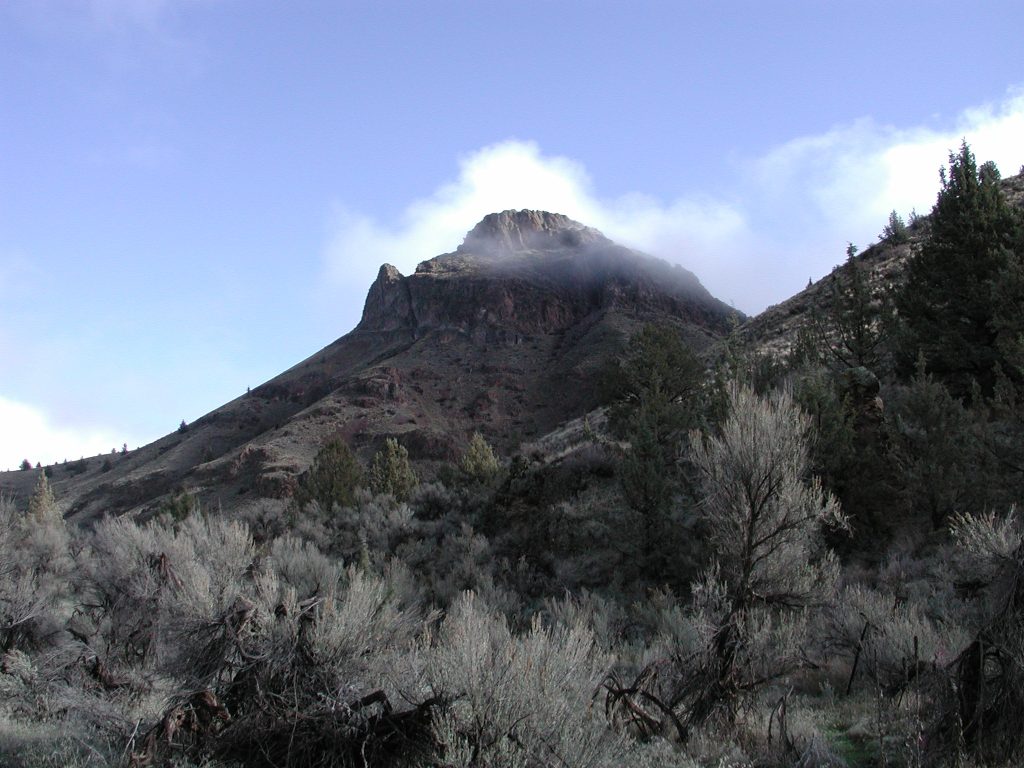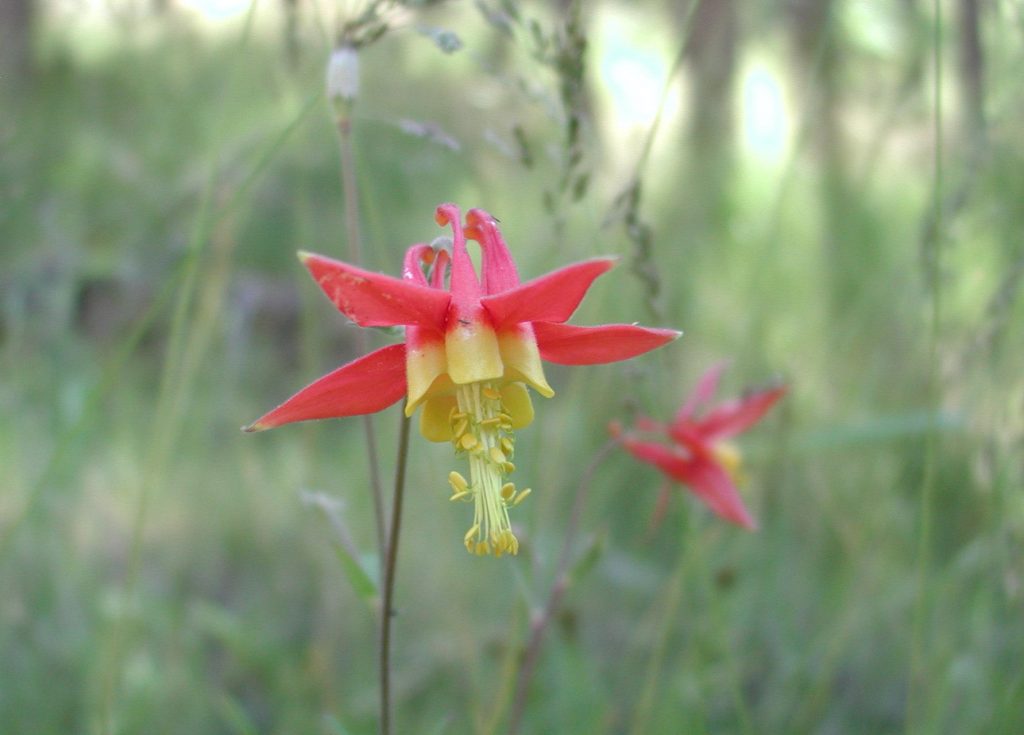The 34,009-acre Pine Creek Conservation Area, near Clarno, Oregon, is a protected property managed for its wildlife habitat. Although primary goals include the protection, management, and restoration of conservation values identified on the property, the Tribes allow regulated access to the public. Visitors may enjoy Pine Creek’s rugged desert landscape vistas, camping, hiking, select hunting opportunities, and other offerings. Please review our property regulations, and if you visit, fill out an access permit either online or at Pine Creek Visitor Information kiosks on highway 218 near the headquarters or at Robinson Creek.
Pine Creek is adjacent to the John Day Fossil Beds National Monument – Clarno Unit. The National Park Service manages this park, which offers trails and information about geology and prehistoric life.
Please be aware that the Spring Basin Wilderness-Pine Creek Land Exchange was completed on July 14, 2021 significantly changing the Pine Creek Property boundaries – See the Land Exchange Section.
History
The Confederated Tribes of Warm Springs (Tribes) have long traditions of natural resource stewardship. The Tribes identified the Pine Creek Conservation Area as a Bonneville Power Administration (BPA) Wildlife and Watershed Mitigation Project site. The Area encompasses 34,331 acres of high desert upland and riparian habitat, with mixed juniper, conifer forest, scrublands and grasslands that support many species of fish and wildlife. The Pine Creek Ranch was acquired in 1999 and expanded with the acquisition of the Wagner Ranch in 2001with BPA funds. The conservation area is located in Wheeler County, approximately 1.3 miles east of Clarno and approximately 5 miles southwest of Fossil, where the Tribes reserve their rights to hunt, fish, gather forest products, and recreate. This conservation area is open to public for recreational use and hunting by permit only. Tribal and public lottery drawings are held each season for limited-access big-game elk and mule deer hunts. Successful applicants will receive an access permit that will allow them to hunt the property during the appropriate general and controlled hunt seasons. Forms and information may be obtained at information kiosks located on Hwy 218 along the conservation area.
In 1999, the Confederated Tribes of the Warm Springs Reservation of Oregon and the United States of America acting through the Department of Energy and BPA signed the Pine Creek Ranch Fish and Wildlife Project Memorandum of Agreement regarding fish and wildlife habitat protection and enhancement. The Agreement established goals for mitigating the effects of the construction, inundation, and operation of the federal hydroelectric John Day Dam affecting the Columbia River basin and its tributaries. Under the terms of the Agreement, BPA agreed to fund the Tribe to acquire and manage real property near Clarno, Oregon along the John Day River. To ensure the properties acquired under the Project continued to be managed to protect fish and wildlife and their habitats, the Tribes granted to the United States, by and through BPA, Conservation Easements as part of a land exchange. To accomplish this objective the parties established the Pine Creek Conservation Easement and the Pine Creek Conservation Area Management Plan maintained by the Tribes. The Agreement also provides funding for habitat maintenance programs until a long-term stewardship agreement is reached.
Land Exchange
In 2016, the Prineville District Bureau of Land Management (BLM) submitted a Notice of Decision for a land exchange with the Tribes and adjacent landowners authorized through the 1976 Federal Land Policy and Management Act and the 2009 Omnibus Public Land Management Act. As a result, the federally managed Spring Basin Wilderness Area was designated, and bordering land ownership patterns were consolidated to improve land and wildlife manageability for all parties involved. An Environmental Assessment was conducted and determined there were no significant impacts to fish and wildlife management objectives as a result of the land swaps. These efforts have reduced habitat fragmentation, improved Conservation Values for the Pine Creek Conservation Area, while also expanding BLM’s designated wilderness area improving access to public lands. The exchange was completed on July 14, 2021.

Property Access and Activities
Trails & Parking
With over 34,000 acres, the Pine Creek Conservation Area has a multitude of backcountry trails to enjoy. All maintenance roads and other hiking trails are accessed by foot travel or horseback only. Pets must be kept within eyesight and in control at all times, and do not harass wildlife. Open fires of any kind, littering, smoking, or alcohol use is prohibited anywhere within Pine Creek boundaries. See detailed maps below for trail names and locations.
Vehicles should be parked along Highway 218 at designated pull-off spots or at designated campgrounds. Any type of motorized vehicle is prohibited on Pine Creek property without specific authorization from Pine Creek Conservation Area staff members.
Snakes
Recreationists visiting Pine Creek’s beautiful backcountry landscape should use caution during hiking season, and remember not to harass wildlife. Non-venomous snakes encountered may include bull/gopher snakes, the rubber boa, racer, striped whipsnake, and the common garter snake.
Native Western Rattlesnakes, one of the few venomous snakes found in Oregon, are encountered at Pine Creek Conservation Area. Rattlesnakes often frequent Pine Creek’s lower elevation wet, riparian zones, and particularly near springs, valleys, and draws. Stream systems and water sources attract an abundance of small wildlife offering an enticing source of food for snakes. Hikers need to stay alert to surroundings at all times to avoid a potential bite. If bitten, seek medical attention immediately.
Important tips for traveling through rattlesnake country:
1. Stay on well-established trails to more easily identify rattlesnakes.
2. Avoid difficult, rock outcroppings with poor visibility.
3. Travel with fellow hikers.
4. If a rattlesnake is encountered keep your distance.
5. Wear long, loose fitting pants (no leggings or shorts).
6. Keep your dog on a leash and/or have your pet vaccinated prior to visiting rattlesnake country.
7. Keep children under watchful eyes at all times.
8. Wear high boots or snakebite protection gators.
Weather
The Pine Creek Conservation Area is located in Central Oregon and experiences a semi-arid climate which averages a just small amount precipitation ranging between 10” and 16” per year depending on elevation. Rain and snowfall typically occur in November, December, and January with periodic episodes in April and early May. Wet seasons make backcountry hiking difficult, especially in lower elevations where mud tends to quickly cake on hiking boots.
Summer months experience sometimes extreme temperatures ranging from 90 to over 110-degrees Fahrenheit. Recreationists are recommended to carry an adequate supply of fresh water and drink often to stay hydrated. Backcountry springs are not guaranteed to have water all year round. Proper clothing is important to stay safe and comfortable. Sun block, sunglasses, proper head gear, and loose-fitting clothing helps to conserve energy and stay protected from the sun. Loose fitting long-sleeved shirts can also inhibit sunburns during the summer months to ensure an enjoyable experience after a long day hiking in the backcountry.
Other events are worth considering. Lightning occurs often during the rainy seasons at higher elevations, particularly on the eastern portion of the property. Hotter months increase the potential for wildfire when grasses are dry. Recreationists should always be aware of their surroundings and stay alert for potential exit routes should one be needed. Any smoke or fire observed should be reported to 911 as soon as possible.




